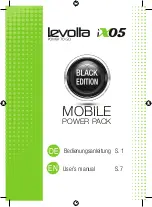
Section 4: Theory of Operation
4.3 FPS Theory of Operation
0101-8292-0, Rev. C
4-9
CV-12SLX User Manual
Filament Switch Mode Supply
The filament supply uses IGBT switches and operates at a frequency of approximately 28.5 kHz.
The filament transformer steps down the voltage with a ratio of 10:1 to provide approximately 10 V
rms at the filament. There are no rectifiers on the output of the transformer as the filament input
is high frequency AC. The filament circuit is current-regulated. There are two modes of filament
operation: One with HV OFF and one with HV ON.
A. HV OFF
Filament Reference: Filament Bias Set
Filament Feedback: Filament Primary Current
B. HV ON
Filament Reference: Autobias (if active)/Emission Current Set
Filament Feedback: High Voltage Current
The filament switch mode supply IGBT switches Q-10 and Q-11 switch the primary of the
filament transformer between the voltage rails at a frequency of approximately 34 kHz. The
filament transformer connects to the center point of the rail capacitors. Thus, half of the rail voltage is
impressed alternately on the transformer by the IGBT inverters. Gate driver ICs U-10A and U-10B, in
conjunction with transformer T-101, provide the gate drive for the IGBT switches. Inductor T-103
has a dual function of adding impedance in the primary and a sensing circuit for fault currents.
Capacitors C-20 through C-24 are tuning capacitors for the output circuit.
The IGBT switches are driven from the PWM modulator chip U-101. This IC has two outputs. One
output drives IGBT switch Q-10 and the other drives IGBT switch Q-11. The PWM is controlled by the
filament current control circuits. The filament current feedback circuit utilizes transformer CT-10 to
measure the filament transformer primary current. The signal is rectified by DB-11 and scaled by A-
102. The feedback signal scaling is 4.0 V = 50 A.
Filament Current Control Circuits
Filament Current Control Loop
Figure 4-9 shows a block diagram of the control and power circuits. As that diagram shows, the
filament current is regulated by filament current feedback or emission current feedback. The
analog OR circuit (U-106B, along with D-13A and D-13B) selects emission-current regulation or
filament-current regulation, depending on which request signal is greatest.
Assume that Filament Current Request (FCR) is asserted and Emission Current Request (ECR) is
zero and that Auto Bias Enable is not asserted. The scaling for FCR is 0 to 4.0 volts = 0 to 50.0
amperes. FCR is buffered by A-103 and fed via analog switch A-104B and buffer inverter U-205B
to the summing junction at the input to the filament current loop compensation amplifier U106A.
The output of U106A feeds the PWM U101 via buffer U106B to drive the switch mode power
inverter. The filament feedback signal from buffer A102 is fed to the summing junction at the
input to the filament current loop compensation amplifier (U106A). Ideally, the FCR level will be
just below the point where emission current takes place, therefore when zero emission current is
called for FCR will dominate. An alternative to FCR to drive the filament current loop is auto bias.
Analog switches A104A and U104B form an SPDT switch that selects either FCR or the Auto Bias
signal as the input to the filament current summing junction. The Auto Bias circuit is described in
greater detail below.
















































